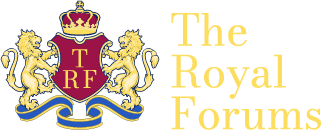
Yes.

In contrast to his brother, Joachim can't see the deeper meaning in excersize. I doubt he would walk the "Hærvejsmarch - Army-Road-March" if he doesn't have to.
This march has been going on for I don't know how many years. The road goes from northern Jutland way down south of the border, through Schlesvig and in fact down past the ancient border-wall, Dannevirke.
And that's the whole purpose of the road.
Dannevirke was first build before Denmark officially became a nation. There were several kings strong enough to unite the realm and build major constructions, like a border-defense and keep it garrisoned 24/365.
Gorm the Old is our first official king, but there were kings of Denmark way before he came about.
Now people traveled, also in ancient times and one of the thing that impressed and which kings who rose above local chieftains, really found useful, was Roman roads.
In a part of Europe that was densely forested and very difficult to travel by land, roads were next to non-existent. Instead you traveled by rivers or by sea.
The problem with rivers (and coastlines) is that they don't necessarily take you where you want to go, and boats were too small to really transport large amounts of goods, animals and people. - So why not build a "Roman road" in Denmark?
So at some point before Gorm the Old, some Danish king planned, financed and organized the building of a road stretching for hundreds of kilometers. Of course the constructors at the time didn't have the know-how to build a replica of a durable, paved Roman road, so instead it became a road made from gravel and dirt. - But easy and cheap to maintain.
So from now on Danish kings could mobilize an army and move it down to the border over land and pretty fast! It was a major strategic break-through!
The road is named The Army Road, but from the 1400s it should really be named The Cattle Road.
By then Denmark became a cattle country and each year herds of cattle were driven south to the hungry markets in the German countries.
All that time the road was maintained, because it was simply good business to keep it in good order - even if it remained a dirt road.
And from time to time armies marched south along the road. - Otherwise you would see a steady trickle of traffic of cattle, geese or carts transporting everything imaginable going up and down the road, because well into the 1700s, even the 1800s most roads here in DK were really pretty terrible!
The Army Road was for at least 1.000 years the only longer road in the Danish realm,
Then industries came to Denmark and the towns and cities began to grow rapidly. That happened in the mid to late 1800's and now the Army Road was replaced by the new wonder: the rail road! And surprisingly quickly it went more or less out of use. Certainly in regards to major traffic, because going through the spine of Jutland, the road was pretty much out of the way, because most towns were located long the coast, now linked by the railroad.
Today the road is used for the Army Road March, some 500 km all the way. Some march, some cycle. It's a scenic route.
Much of the road is now paved.



 Yes.
Yes. 